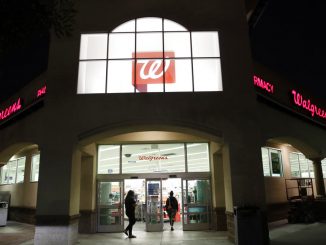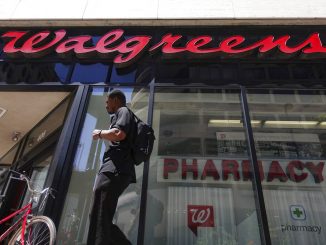
Customers may see Walgreens stores one-fourth the size of a regular location or CVS drugstores with entire primary clinics stuffed inside. If these experiments succeed, analysts say the new stores might improve access to care and create a more lasting connection with customers.
“Everyone looks at health care and says, ‘Oh yeah, it’s a market that’s ripe for disruption,’” said Neil Saunders, managing director of the consulting and data analysis firm GlobalData. But disruption isn’t easy.
Walgreens CEO Tim Wentworth said recently that his company could close a “significant portion” of underperforming stores in the next few years. CVS Health is going through a round of closings. Rite Aid has filed for bankruptcy. Thousands of independent drugstores have closed over the past five years.
More than 30,000 drugstores are scattered around the country, but even Walgreens executives admit that the market is overbuilt. The stores have struggled with increased competition from Amazon and lower-price options like Walmart or Dollar Tree. They’re also dealing with theft, growing costs and thinner prescription reimbursement.
Some are responding with new looks. Walgreens is testing a Chicago store with digital kiosks where customers place orders. A separate desk offers pickup of items ordered at the kiosks or online.
The company also has opened about 100 mini drugstores focused on health and wellness and featuring store-brand merchandise. Walgreens started testing these stores in 2019 and plans to add more this year.
Walgreens spokesman Jim Cohn said shopper preferences are shifting, and the company aims “to meet them where, when and how they want to shop.”
Saunders notes these stores are less expensive to run and allow the company to serve areas without enough people to support a bigger store.
At one of these locations in Indianapolis, only four short aisles separate the front door from the pharmacy counter in the back. The shelves contain healthy snacks, vitamins, first aid supplies, and the usual mix of antacids and Advil.
However, the store, closed on Sundays and about a half-mile from a vacant Walgreens, sells no magazines and only a small selection of greeting cards and beauty products.
Customer Leonard King has visited several times. He says his prescriptions are ready on time, and the store has decent supplies.
“Being a diabetic, sometimes medicines are hard to get,” the 67-year-old Indianapolis resident said.
But King also said he misses being able to shop for things like toiletry items that can be found at bigger stores.
Some CVS Health stores, including Oak Street Health primary care clinics, offer a smaller selection of retail items. The company plans to open about 25 of these combinations this year and 11 more next year, with either full-sized or smaller clinics in the stores.
The clinics can have primary care doctors, social workers and people to help with insurance coverage. They specialize in treating patients with Medicare Advantage plans, which are privately run versions of the government’s coverage program, primarily for people aged 65 and older.
CVS Health says it is putting the clinics in areas that need primary care. With its initial rollout, it is targeting big cities like Chicago, New York and Dallas. “If we can invest more upfront for the patients who need it, by increasing access, improving quality of care, we can keep patients healthier,” company executive Mike Pykosz said.
Making things easier for patients helps build relationships between store staff and customers. It can lead to repeat business, noted Arielle Trzcinski, a principal analyst at Forrester who covers health care.
Independent drugstores have also been polishing their health care reputations. They are expanding immunizations and testing, spurred partly by increased business during the COVID-19 pandemic, said Kurt Proctor of the National Community Pharmacists Association.
Some also are adding doctor’s offices or specializing in diabetes care. Proctor said they are doing what they have always done: adapting to community needs.
“There are 19,000 (independent) stores across the country, and no two are exactly alike,” he said.
Diving into health care is familiar for drugstores. They started adding small clinics more than 20 years ago. CVS Health has been on a health kick since it quit selling tobacco in 2014.
As many as a quarter of drugstores could eventually wind up with big health clinics, especially in densely populated areas, said Jeff Jonas, a portfolio manager at Gabelli Funds.
But he cautioned that the idea is still unproven. Walgreens has closed VillageMD primary care clinics just a few years after it launched plans to add hundreds to its stores.



